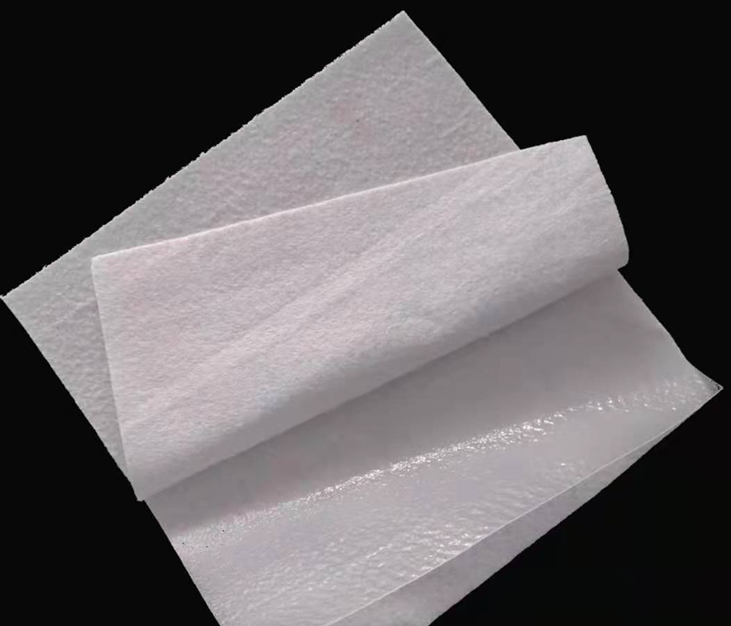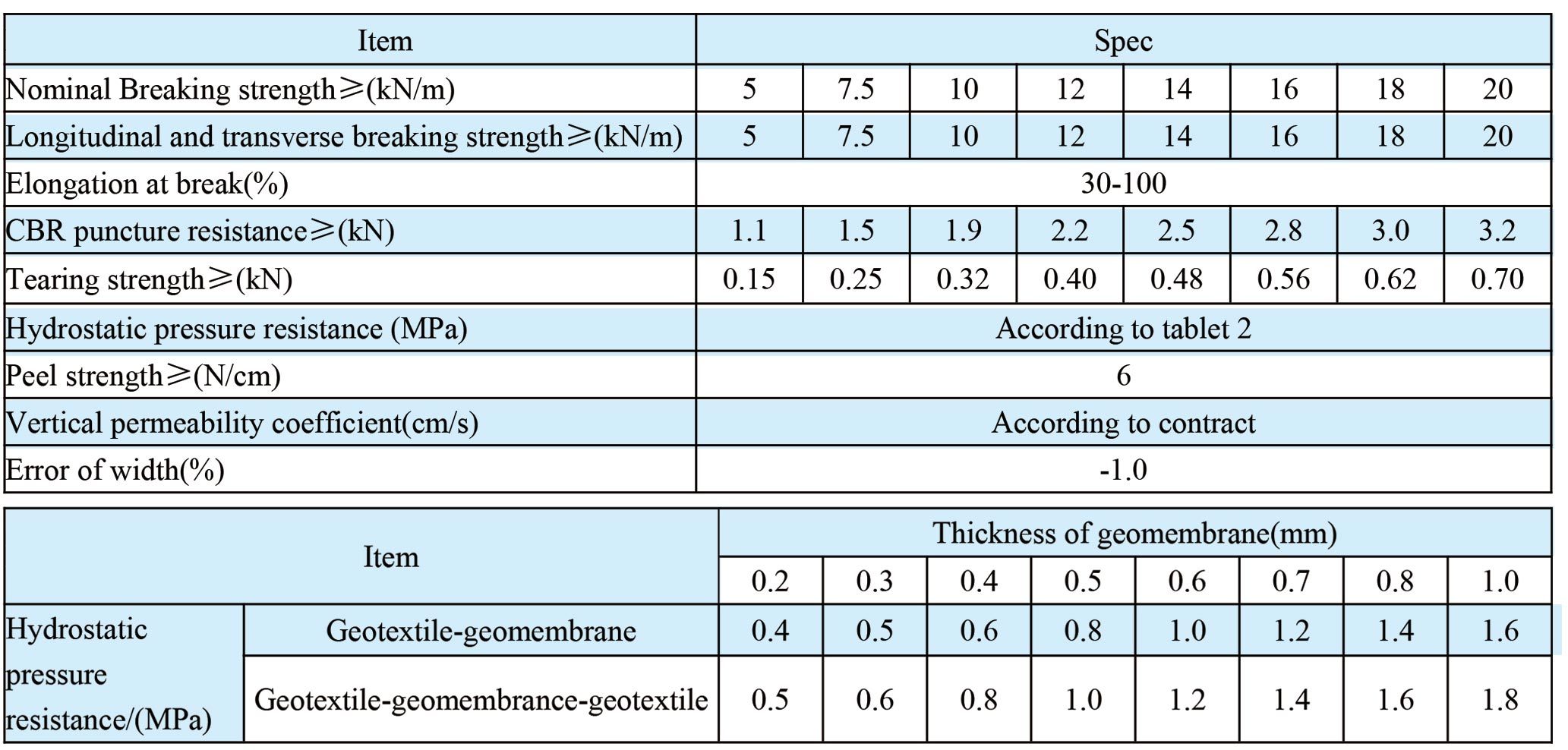复合土工膜
複合防滲み材
Composite Geomembrane
- Geocell
- Geomembrane
- Uniaxial geogrid
- Biaxial geogrid
- Geotextile
- EVOH Geomembrane
- Warp-knitted geogrid
- Geosynthetic Clay Liner
- Composite Geonet
- Self - adhesive waterproof membrane
- Permeable pipe
- Composite anti-permeability material
- Graebel Fix
- Safety net
- Weed control sheet
- Flexible container bag
- Dimpled Drainage Sheet
- Environmental Conservation Engineering
- Application of geomembrane in water conservancy
- Application of geomembrane in aquaculture
- Application of geomembrane in chemical industry
- Mining Engineering
- Geocell retaining wall construction method
- Geocell Surface Protection Construction Method
- Subgrade Reinforcement Construction Method
- Geocell - Slope protection method for cold regions
- Geotextiles in slope protection projects
- Project to Strengthen Weak Infrastructure
- Landfill Isolation Project
- Rental
Product Detail
Composite geomembrane is a geosynthetic material that combines a geomembrane (impermeable liner) with geotextile (reinforcement layer) to enhance mechanical properties and environmental adaptability. The geomembrane component (usually HDPE, LLDPE, or PVC) provides impermeability, while the geotextile (non-woven or woven fabric) improves tensile strength, puncture resistance, and friction properties.
Key Features:
• Superior Impermeability – Prevents liquid seepage and contamination.
• Enhanced Strength & Durability – Resistant to punctures, tears, and external pressure.
• Excellent Chemical & UV Resistance – Suitable for harsh environments.
• Good Flexibility & Adaptability – Can conform to uneven surfaces.
• Improved Friction & Stability – Reduces sliding in slope applications.
Composite geomembranes are classified based on the structure:
• Single-sided composite geomembrane (one layer of geomembrane + one layer of geotextile)
• Double-sided composite geomembrane (one layer of geomembrane + two layers of geotextile)

Features
Landfill and Waste Containment
• Acts as a liner and capping system to prevent leachate leakage.
• Ensures groundwater protection from hazardous waste.
• Enhances slope stability in landfill construction.
Water Conservation and Reservoir Lining
• Used in irrigation ponds, reservoirs, and canals to prevent water loss.
• Reduces soil erosion and seepage in dam construction.
• Maintains structural integrity in water storage applications.
Mining Industry
• Used in heap leaching pads to contain chemical solutions for metal extraction.
• Lines tailings dams and mining ponds to prevent contamination.
• Provides stability and containment for underground mining tunnels.
Road & Railway Construction
• Acts as a moisture barrier to prevent water infiltration in roadbeds.
• Improves subgrade stability in highways, railways, and tunnels.
• Reduces soil settlement and deformation in soft ground areas.
Aquaculture and Fish Farming
• Creates an impermeable lining for fish and shrimp ponds.
• Reduces water seepage and prevents contaminant infiltration.
• Ensures a safe and controlled aquatic environment.
Oil & Gas Industry
• Used in oil spill containment and secondary containment systems.
• Prevents hazardous chemical leaks from storage tanks and refineries.
• Provides a protective layer in pipeline projects.
Wastewater Treatment Plants
• Lines industrial wastewater lagoons and treatment ponds.
• Prevents toxic liquid seepage in sewage treatment facilities.
• Enhances environmental protection in chemical processing plants.
Tunnel and Underground Waterproofing
• Used in subway systems and underground structures for water resistance.
• Prevents groundwater seepage in tunnel linings.
• Provides long-term durability in underground engineering.
Specification





